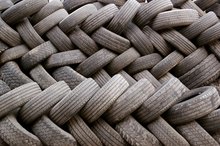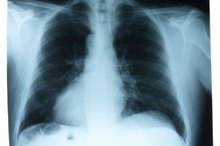Welding galvanized steel is common in the metal fabricating industry 1. Most welders will at some point in their career perform a weld on galvanized steel and encounter galvanize poisoning or “metal fume fever.” Galvanize poisoning is a short-term reaction to overexposure of zinc oxide 1. Zinc oxide is produced when the steel’s galvanized coating is heated and evaporates 1.
What is Galvanized Steel
Galvanized steel is iron that is coated with zinc 1. When hot-dipped, the zinc chemically reacts with the base metal to form a corrosion resistant coating. The outer layer of the coating is pure zinc and subsequent layers gradually change in composition until they reach the iron base metal.
Between the zinc outer layer and iron base metal, zinc oxide is present in varying percentages of zinc to iron. The zinc oxide has the same chemical make-up as the white powder used by lifeguards to protect their noses against sunburn.
- Galvanized steel is iron that is coated with zinc 1.
- The outer layer of the coating is pure zinc and subsequent layers gradually change in composition until they reach the iron base metal.
Signs of Galvanizing During Welding
Side Effects of Zinc Lozenges
Learn More
Proper prep work to remove galvanizing from the weld area will reduce your exposure to zinc oxide fumes, but some galvanize will remain in the weld area. Yellowish-green smoke, white powdery particles floating in the air and white residue around the weld are sure signs that zinc oxide is present while welding.
Exposure to large amounts of the yellowish-green zinc oxide fumes will result in galvanize poisoning, commonly referred to as metal fume fever. The amount of exposure will have a direct effect on the severity of your symptoms.
- Proper prep work to remove galvanizing from the weld area will reduce your exposure to zinc oxide fumes, but some galvanize will remain in the weld area.
Symptoms of Galvanize Poisoning (Metal Fume Fever)
Signs of galvanize poisoning are similar to flu symptoms. The onset of metal fume fever begins shortly after the body is exposed to zinc oxide and the symptoms include a slight headache and nausea. With increased exposure, flulike symptoms begin to set in.
Moderate zinc oxide exposure results in chills, shaking, slight fever, vomiting, and cold sweats. When the listed symptoms begin, it is time to stop welding and get fresh air. The symptoms can quickly become debilitating and you may need to go home and let the symptoms subside.
Fatalities have been associated with extreme cases of galvanize poisoning. Therefore when metal fume fever symptoms begin, you should immediately avoid further exposure.
- Signs of galvanize poisoning are similar to flu symptoms.
- The onset of metal fume fever begins shortly after the body is exposed to zinc oxide and the symptoms include a slight headache and nausea.
How Long “Metal Fume Fever” Lasts
Toxic Vapors Emitted From New Tires
Learn More
Metal fume fever is short-lived and the symptoms begin to fade within four hours of exposure and generally completely fade within 24 hours. Extreme cases of overexposure may see metal fume fever symptoms last for as long as 48 hours.
Drinking milk can quicken the recovery process as calcium helps remove the zinc build-up from your body.
There have been studies performed by the Centers for Disease Control (CDC) and the Occupational Safety and Health Administration (OSHA) on the long-term effects of welding galvanized steel 1. No studies have shown long-term health problems due to continued exposure to zinc oxide fumes or repeated cases of metal fume fever.
- Metal fume fever is short-lived and the symptoms begin to fade within four hours of exposure and generally completely fade within 24 hours.
Avoiding Overexposure to Galvanize Fumes
Proper ventilation, avoiding direct contact with zinc oxide smoke, and proper pre-welding prep work will reduce the chances of your getting metal fume fever. Experienced welders that have had metal fume fever will tell you that drinking milk before, during and after welding galvanized steel will help eliminate the galvanize poisoning 1.
There are specialized fresh air welding hoods available for welders who frequently weld galvanized steel 1.
- Proper ventilation, avoiding direct contact with zinc oxide smoke, and proper pre-welding prep work will reduce the chances of your getting metal fume fever.
- Experienced welders that have had metal fume fever will tell you that drinking milk before, during and after welding galvanized steel will help eliminate the galvanize poisoning 1.
Related Articles
References









